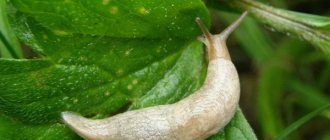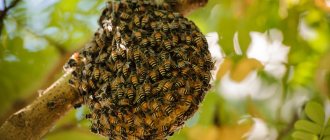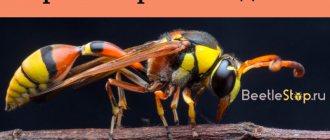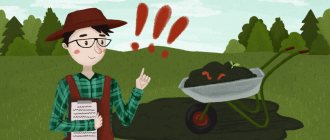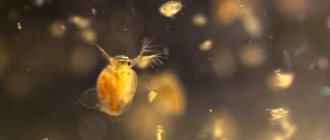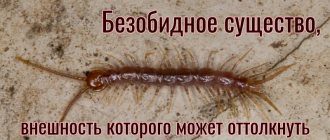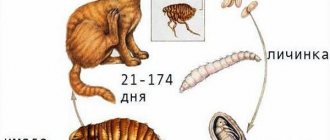Slugs - gastropods without shells - are, unfortunately, frequent guests in summer cottage gardens. These pests happily feast on tender seedlings, tubers and root vegetables, as well as juicy berries and leaves of vegetable and flower crops.
But if our gardeners, at the very least, have learned to fight “ordinary” small slugs with the help of special traps, molluscicide preparations, and even by planting special repellent plants, then the last few seasons have brought unpleasant surprises to summer residents. Namely, the emergence of a completely new gastropod pest for many regions, which, due to its unusual size, is often called the giant slug. What is this huge mollusk, where did it come from, why is it dangerous and how to deal with it?
Slugs - description of the pest
The mollusk consists of three main parts: the head, the body, and the legs. On the head there is a mouth, a pair of long tentacles responsible for vision and smell.
There are also short ones. They contain receptors for touch and taste. On the back there is a noticeable mantle, inside of which there is a lung. On the side of this convex “collar” are the respiratory and anal openings.
The lower part of the mollusk is called the leg. With the help of this surface he moves. The animal's skin is constantly covered with mucus. Protective color: from gray to brown with brown spots.
Good to know! Slime protects against enemies, cools you and helps you glide. The length of the pest can be from 2 mm to 20 cm. It depends on the type of mollusk.
Slug - what does it eat?
The slug's food is plants and mushrooms. Favorite foods are vegetables and berries. And the juicy parts. These are the ones the pest prefers.
After slug raids on garden and garden plants, characteristic marks remain - depressions with smooth edges. First, the uninvited guest eats his favorite vegetables: cabbage, young lettuce. He loves berries very much. I am partial to dandelions and cruciferous vegetables.
Reproduction and lifestyle
Slugs are hermaphrodites. However, to lay eggs, a partner is needed for cross-fertilization. Before mating, they perform a mating dance.
One individual makes a clutch of 20-30 eggs. The “nest” is made in the soil, which must be moist. Small mollusks appear after 2.5 weeks. After six, they are capable of reproduction.
During the summer season, one pest lays several hundred eggs (about 500). In the fall, most of the slugs die, but the offspring spend the winter. Hatches in early summer. Mollusks that do not have time to lay eggs in the fall overwinter in the ground. The eggs are laid in the spring.
Good to know! Pests love damp thickets and often live in the shade. They hide under large leaves. They love to live in compost pits. There is a lot of suitable food for them - cut plants. They can live in the cellar, as well as the basement. They overwinter in the ground not too deep (3 cm from the surface).
Harm or benefit
Slugs are considered pests. They are capable of destroying the entire crop: vegetables, berries. They do not disdain ornamental plants.
Harm:
- damage to plants;
- transfer of disease (gray rot);
- reducing the shelf life of the crop.
Benefit:
- go as poultry feed;
- are an excellent filling for fishing;
- clear trees of lichens;
- recycle organic matter.
What do slugs eat?
Slugs can be called “night robbers”, since they prefer to act unnoticed in the dark. They come out of their hiding places to “robbery” at 21:00 and hide after 2:00 am. Therefore, when gardeners notice holes in the leaves and pits in the fruits, they often think that caterpillars have “worked” on them. Because slugs scrape up their food using several thousand teeth located on their tongue-grater, the damage they leave behind is easy to recognize.
For example, in tomato and cucumber fruits, cabbage forks, and root vegetables, slugs make holes that expand deeper, and the leaves “make holes,” as a rule, in the middle, without affecting the large veins. The “tricks” of slugs are also easy to recognize by the silvery stripes of mucus and piles of stringy excrement left on the leaves and fruits.
What do Spanish slugs eat?
The main diet is plant foods - greens, leaves, fruits, vegetables, mushrooms. However, terrestrial mollusks of the genus Arion, which include Spanish slugs, worry zoologists not only with their gluttony, but also with attacks on the chicks of some passerine birds that make nests on the ground or in low bushes. Slugs are capable of causing damage to chicks, including death. There are plants that slugs eat first (some can be used as bait):
- cabbage;
- lettuce (until it sprouts and becomes bitter);
- strawberries;
- rape;
- dandelion;
- shepherd's purse;
- woodlice;
- cruciferous vegetables (except mustard).
The brown slugs that flooded the Moscow region in 2022 are extremely indiscriminate eaters, eating everything they come across: plant debris, dead animals, feces, rotting paper, and even earthworms and smaller snails.
How to deal with slugs?
The fight against these uninvited guests involves the use of chemicals or traditional methods. You can try to collect them manually. But with a large concentration of slugs, this method is difficult.
Natural enemies
In nature, quite a few animals feed on mollusks. These are mainly birds: starlings, blackbirds, magpies, crows, and also rooks. You can attract winged helpers by building birdhouses on your property.
Shrews, hedgehogs, moles, and frogs also eat slugs. Attracting natural enemies is a good control measure in the absence of a large pest infestation.
Smells of herbs
Slugs cannot tolerate the aroma of wormwood, tobacco, mint, and garlic. They do not tolerate the smell of walnut leaves, as well as marigolds. The plants are brewed in boiling water. After three hours of infusion, filter and cool. Then processing is carried out.
Folk remedies
Experienced gardeners prefer to fight slugs using traditional methods. They are proven, effective and economical. There are many ways to repel shellfish, protecting crops from damage.
The best folk remedies:
- wood ash. Gastropods do not approach areas treated with ash. It sticks to mucus and interferes with movement. Ash is sprinkled in the evening in dry weather along the beds and bushes. You can add slaked lime. After a week, the treatment is repeated;
- vinegar. The liquid is dissolved in a bucket of water. You will need a third of a glass. The resulting solution is sprayed onto the leaves, as well as clusters of slugs. It is advisable not to allow the solution to get under the roots;
- salt. Most often, table salt is used for compost heaps. Sprinkle like ash in the evening onto a dry surface;
- mustard. The powder of this substance will not harm plants. But it will destroy shellfish. The soil around the bushes is treated with mustard. Prepare a solution: 150 grams of powder are infused in a bucket of water for several hours. The treatment is done at sunset on a dry bud. After four days, the procedure is repeated;
- ammonia. Ammonia is an effective remedy against uninvited guests. A liter of ammonia (25%) is poured into a bucket of water. Afterwards, fill the cracks in the soil (places where slugs hide). Avoid contact with leaves (burns are possible);
- needles. An effective way is to mulch with a thick layer of pine needles. They prevent pests from moving, prick, and also repel them with an unpleasant aroma;
- barriers. This method deters shellfish. Barriers are made from sand, crushed shells, and coffee grounds. They sprinkle it around the bushes, along the perimeter of the beds. Add soot and lime.
Chemicals
The most effective method is treatment with preparations containing chemicals. However, it is recommended to use such means in extreme cases. Spraying is stopped three weeks before the start of harvest. In this case, the health harm from the use of toxic substances is reduced.
There are several chemicals:
- "Storm" . The birthplace of the invention is Switzerland. Affordable, safe and effective product. Treatment begins in the spring to protect the shoots. The main component is metaldehyde. The action of “Thunderstorm” is both contact and intestinal. It lasts 3 weeks. The product is moisture resistant. Granules of the substance are scattered near young shoots. 60 grams is enough for 20 square meters. The site is processed up to 3 times a season. Available in the form of blue granules in bags of 15 (60) grams. Vegetables and berries should be washed thoroughly when using Thunderstorm.
- "Slug Eater" . The latest generation drug. Release form: granules. Instructions for use are located on the packaging. Country - used for processing vegetable and fruit crops. Also suitable for protecting grapes and flowers. 60 grams of the substance is enough to treat 20 square meters. Granules are sprinkled between the beds. It is necessary to use protective equipment and keep children and pets away.
- "Superphosphate". An effective poison for pests. This drug has a dual effect: it feeds and kills slugs. It is considered a mineral fertilizer, which improves the quality of the crop.
Damage from slugs
The scientific literature indicates that these slugs can carry the bacteria Escherichia coli (Escherichia coli), and are an intermediate host of several types of parasites that infect canines; intermediate host of nematodes that cause parasitic diseases (Aelurostrongylus abstrusus), the definitive host of which is cats. Green feed contaminated by slugs can increase the risk of pets contracting botulism, which is caused by bacteria (Clostridium botulinum) that live in the soil and can come into contact with slugs.
The mucus of gastropods contains parasite eggs, so people should not come into contact with it with bare hands. It is recommended to protect your skin with gloves when collecting slugs. And then wash your hands thoroughly with soap and disinfect your skin and nails.
Prevention of occurrence
To reduce the possibility of slugs appearing in the garden, preventive measures should be taken:
- The site needs to be looked after: remove weeds and plow regularly.
- Plantings must be thinned out - mollusks do not tolerate sunny and dry surfaces.
- After harvesting the fruits, you need to clean the soil from tops and unnecessary vegetation.
- It is good to plant parsley, mint, and garlic. Pests do not like their scent. These plants can be planted between beds and bushes.
- Attract natural enemies: hang bird feeders, build small ponds for frogs, place treats in saucers for hedgehogs.
Let's celebrate! When slugs appear on the site, it is important to immediately use traditional methods. If the number of mollusks is too large, use chemicals. But the best way to prevent pest infestations is through prevention. Such measures will help preserve the harvest. Effective results can be achieved by taking comprehensive measures to combat slugs.
Rosemary officinalis (common)
This elegant plant is not only an excellent universal and very useful spicy seasoning, but also an excellent repeller for garden pests. The fresh, slightly bitter leaves of this evergreen shrub exude a clean, bright aroma reminiscent of a complex mixture of camphor, eucalyptus, pine and lemon, smells that slugs really don't like.
This plant is very heat-loving and freezes at the slightest drop in temperature, so it is best to grow it in tubs and place it near the beds in spring and summer, so that in winter it can be moved to a protected room with a temperature of at least 5°C.
- How to grow rosemary from a store-bought sprig
Is it possible to grow rosemary at home from a sprig bought in a store? An inquisitive experimenter found out that everything is real!
The appearance of slugs and where they come from in the house
Slugs are gastropods that have lost their shells during evolution. They can be found in any region of the planet with a mild, humid climate. The body of slugs is wrinkled. It can have a color from yellow-white to light gray. There may also be black spots or longitudinal stripes on the body of mollusks. There are 4 processes on the head. They are shaped like small horns.
Slugs live in gardens, fields, and vegetable gardens, but they can also get into the house. Thanks to their flexible body, capable of taking any shape, mollusks can penetrate the narrowest crevices. If there are cracks in the foundation of the house, this is a guarantee that new disgusting-looking residents will soon appear inside the house.
Since the highest humidity in the house is in the bathroom and toilet, you can most often see slugs in these rooms. Therefore, in order not to later look for where slugs entered the house from, if they are identified on the site, it is necessary to block their passage into the house and other buildings in advance.
In the house
Basil
Basil has a very pleasant smell for humans and an unpleasant smell for slugs, also due to the essential oils contained in the above-ground part of the plant. In cooking, this aroma is described as the spicy smell of allspice with a slightly cooling, salty taste. Thanks to its smell, as well as its rich vitamin composition and other beneficial substances, basil is one of the oldest spices and a medicinal plant long known to mankind.
The crop is propagated by seeds; it is very demanding on soil fertility, moisture, light and heat. There are more than 60 types of basil, plus almost each of them has several varieties, which can differ in both appearance and cultivation techniques.
- 10 Most Common Problems When Growing Basil
We’ll tell you how to avoid problems and eliminate them in time so as not to lose your basil harvest.
